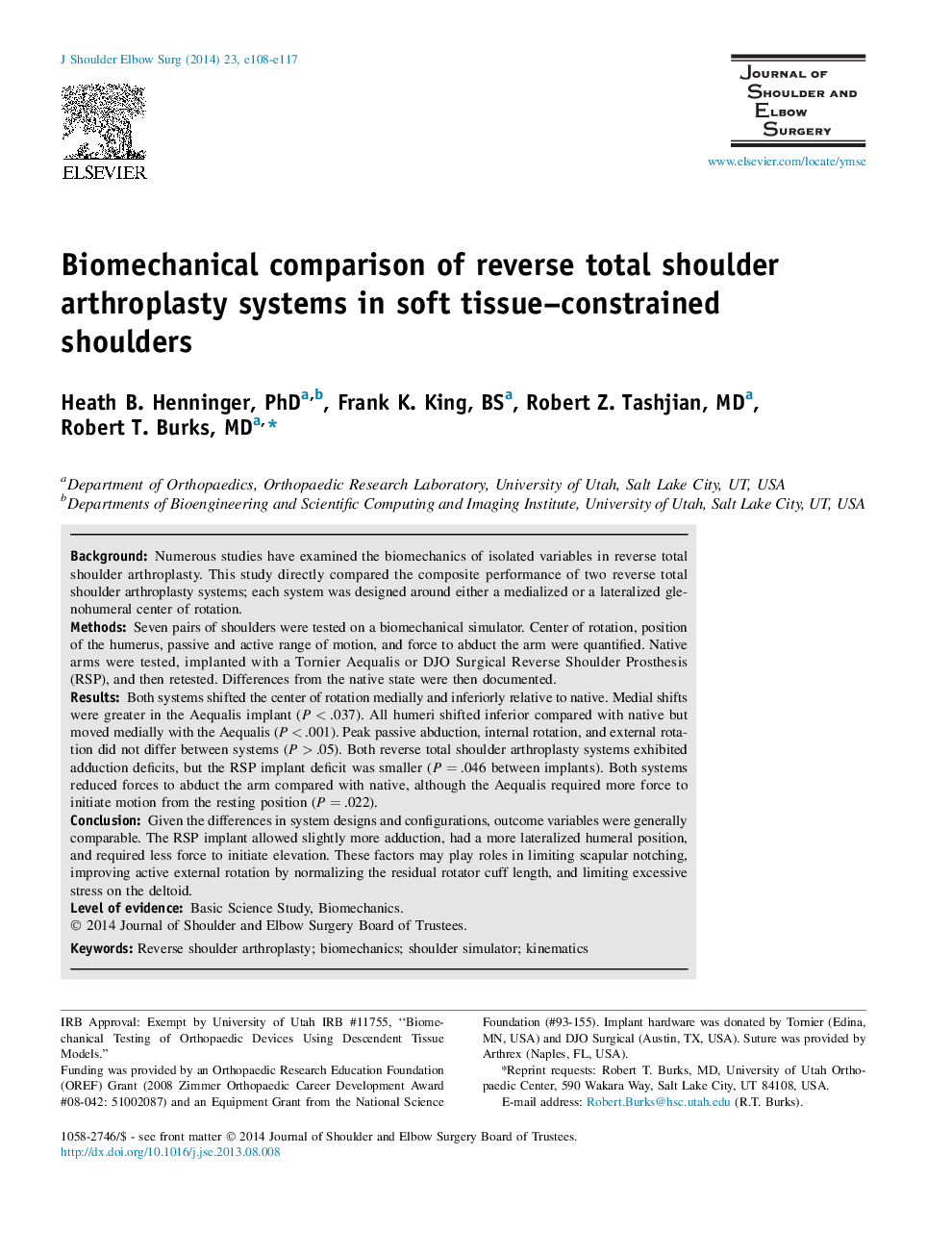| کد مقاله | کد نشریه | سال انتشار | مقاله انگلیسی | نسخه تمام متن |
|---|---|---|---|---|
| 4074439 | 1267009 | 2014 | 10 صفحه PDF | دانلود رایگان |
BackgroundNumerous studies have examined the biomechanics of isolated variables in reverse total shoulder arthroplasty. This study directly compared the composite performance of two reverse total shoulder arthroplasty systems; each system was designed around either a medialized or a lateralized glenohumeral center of rotation.MethodsSeven pairs of shoulders were tested on a biomechanical simulator. Center of rotation, position of the humerus, passive and active range of motion, and force to abduct the arm were quantified. Native arms were tested, implanted with a Tornier Aequalis or DJO Surgical Reverse Shoulder Prosthesis (RSP), and then retested. Differences from the native state were then documented.ResultsBoth systems shifted the center of rotation medially and inferiorly relative to native. Medial shifts were greater in the Aequalis implant (P < .037). All humeri shifted inferior compared with native but moved medially with the Aequalis (P < .001). Peak passive abduction, internal rotation, and external rotation did not differ between systems (P > .05). Both reverse total shoulder arthroplasty systems exhibited adduction deficits, but the RSP implant deficit was smaller (P = .046 between implants). Both systems reduced forces to abduct the arm compared with native, although the Aequalis required more force to initiate motion from the resting position (P = .022).ConclusionGiven the differences in system designs and configurations, outcome variables were generally comparable. The RSP implant allowed slightly more adduction, had a more lateralized humeral position, and required less force to initiate elevation. These factors may play roles in limiting scapular notching, improving active external rotation by normalizing the residual rotator cuff length, and limiting excessive stress on the deltoid.
Journal: Journal of Shoulder and Elbow Surgery - Volume 23, Issue 5, May 2014, Pages e108–e117
